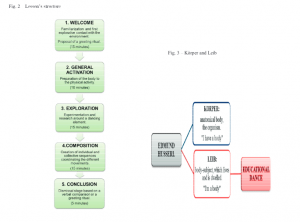To conclude my inquiry project, I just wanted to bring the focus back to why I chose this topic. The reason I chose this topic is because I am a dancer and now I teach dance and so I value how dance helps students succeed in their everyday life. This transfers to the idea that dance supports the creation of valuable life skills as well as a balanced learning atmosphere where the child is at the centre of their education.
I as a future teacher, believe in this educational pedagogy and arts mindset as there are many affects emotionally and cognitively. Performing Arts is a subject area that should receive more attention and in my classroom this will definitely be my goal!
Something I believe is beneficial and that I learned is to understand is that educational dance in schools and studio dance is different. However they still do share common outcomes and benefits related to health and development. Here is a link to a blog further discussing this topic. https://www.danceteacherweb.com/en/blog/blog/2016/11/7/dance-education-vs-dance-training-whats-difference/.
The following website, https://epicdancestudio.wixsite.com/website is from the dance studio my mom and I opened and created the website and I manage all social media.
I have also added a photo of myself when performing in Disney World in 2017!






Recent Comments